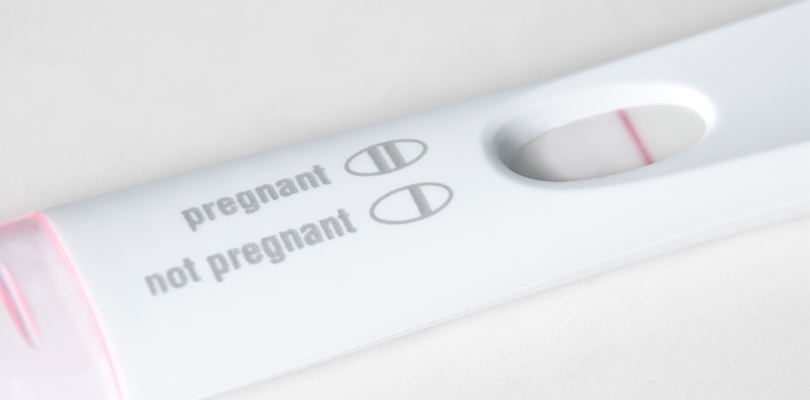Photo Credit: Cathy Yeulet / iStockPhoto.com
Is It a Migraine or a Stroke?
The day begins with a pressure you recognize on one side of your head. A migraine is coming on, and it’s time to act fast to prevent it; you take your medications, drink a liter of water, and plan on avoiding all potential triggers.
But what about those times when a migraine seems to appear out of nowhere and you suddenly are dealing with incredible pain, nausea, and visual disturbances? Should you be concerned it is something more?
Recent studies indicate there is increased risk of stroke for those prone to migraines. Research has shown women who have frequent complex migraines with aura were almost twice as likely to have a future stroke.
That risk was increased even more if they had any of the other risk factors, like if they were taking oral birth control pills, if they had high blood pressure, or if they smoked.
Some of the symptoms of a migraine, a mini-stroke, and a stroke can be similar, so it can be hard to know when, and if, you should panic. However, it’s important not to doubt yourself if you believe you may be having a stroke; if this is the case you need to get to the emergency room immediately.
Get the Facts: A Migraine Versus Stroke
According to the American Heart Association, almost 800,000 people suffer a new or recurrent stroke each year in the United States.
Strokes take the life of about 140,000 people in the U.S. each year; they are the third leading cause of death, coming in right behind heart disease and cancer. Strokes are also one of the leading causes of disability — they are not something you want to be guessing about.
What Is a Migraine?
Migraines have been found to be primarily a vascular headache in which some sensitive blood vessels in the brain respond incorrectly to the sympathetic nervous system. This system also affects a person’s gastrointestinal tract and this can add nausea and vomiting to the symptoms that accompany a migraine.
Statistically, only about 20 percent of a migraine suffers also experience an aura. It is the aura that can mimic symptoms of having a stroke, but they typically occur before the actual onset of the pain.
Common signs and symptoms of aura are:
- Most often the symptoms will be flashing lights and visual disturbances — basically, you are not seeing normally. Areas of your vision may be shadowed or have the appearance of light within it.
- Sometimes, an aura can cause muscle weakness or difficulty speaking. Blood flow is different during a migraine with aura, so the blood vessels in the brain contract during the episode then dilate causing the headache.
What Is a Stroke?
The most common kind of stroke, an ischemic stroke, occurs when a blood clot blocks an artery in the brain. Experts say these don't usually bring on a headache.
Ever wondered why we yawn? Our intentions are not to bore you but we know that while reading this article, it’s likely you’ll yawn at least once or twice.
Ischemic strokes, according to doctors, do not typically cause crushing pain. What they have in common with a migraine is they can cause changes in vision. There is a small distinction in the vision changes to remember:
- With a migraine with aura: The visual disturbances keep moving and shifting. Vision problems also come on gradually.
- With a stroke: Vision problems tend to stay still and do not change. In addition, these problems will occur suddenly.
There are now amazing medications that will quickly break up the clot and restore the blood flow (similar to treatment for heart attacks). This is why it is imperative to get to an ER for evaluation if any symptoms or warning signs occur, preferably within a 3- to 4-hour window, for treatment.
The less common hemorrhagic stroke is from actual bleeding in the brain. Because bleeding stretches the outer membranes, a very intense headache commonly accompanies a hemorrhagic stroke.
While judging the severity of a headache is a difficult thing to gauge, you can closely look at how your headache pain developed. A migraine will typically begin fairly small and grow over time to its full potential.
With the pain associated with a hemorrhage stroke, it can come on in seconds, like you received blow to your head. It can even cause a person to momentarily lose consciousness, which is something that won’t happen with a migraine.
Important Signs and Symptoms of an Actual Stroke
There are some specific symptoms to be aware of that indicate stroke. They include sudden onset of:
- A severe headache described as the “worst of your entire life.”
- Numbness, paralysis or generalized weakness of your face, arm or leg, typically on one side of the body.
- Trouble seeing, double vision, things suddenly seeming blurry.
- Confusion, cognitive impairment, or trouble understanding speech.
- Your speech is suddenly slurred or garbled.
- Trouble walking or veering to one side, unsteady gait dizziness or clumsiness.
What Are Your Risks?
Risk of stroke is very similar to the risk of developing heart disease. What puts you at greater risk for having a heart attack — developing clogged arteries in your heart — also can put you at risk for clots in the arteries supplying blood to your brain.
The risk factors you can control are:
- Smoking — don’t do it. If you do, quit now.
- Eating a poor diet that’s high in fat, which elevates your cholesterol. Obesity can also play a role.
- Not getting enough physical activity.
- For women, other risks also include taking oral birth control pills.
Factors you can’t really prevent:
- A history of diabetes and high blood pressure.
- Autoimmune diseases, such as lupus.
- Clotting diseases of the blood.
What Should You Remember?
Though it helps to know all these facts and symptoms, it’s important to know you cannot — and should not — discern whether what you’re experiencing is a stroke or a migraine on your own.
At the first sign of any severe symptom that differs from your normal migraine symptoms and makes you question if it is something more, get to an emergency room right away.







